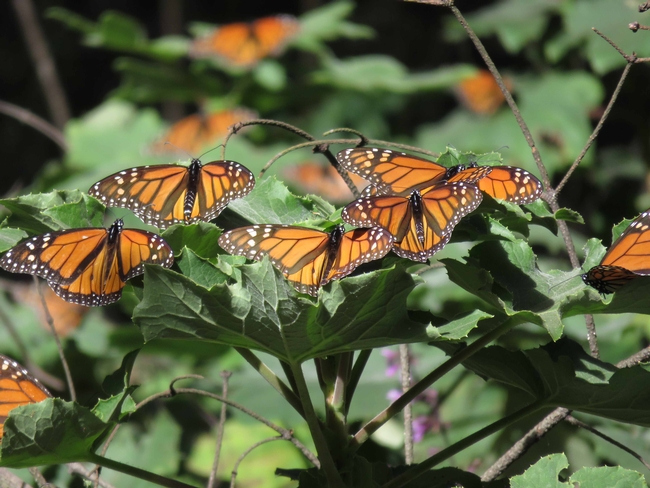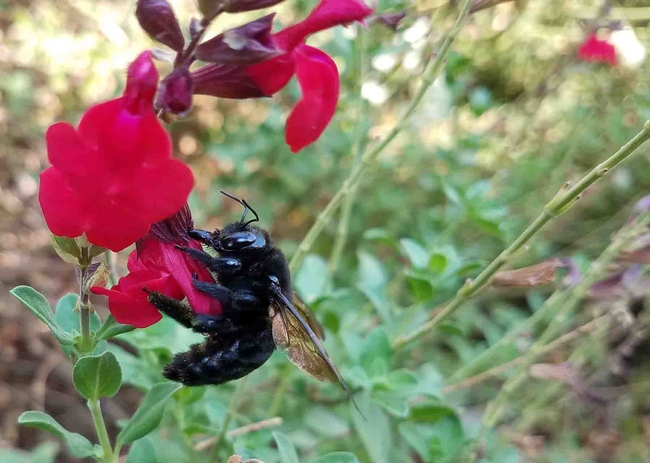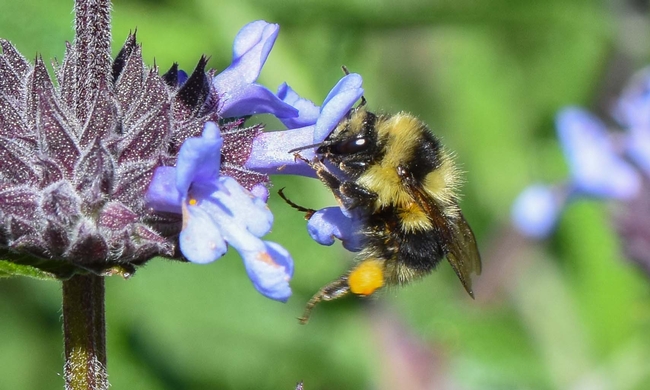To help raise awareness about the declining populations of many pollinating species, in 2017 the US Senate unanimously voted to establish National Pollinator Week. Because pollinators are crucial not only to our human food supply but to the health of all life on the planet, there is good reason to care about them: our lives are intertwined with theirs. This year National Pollinator Week is from June 20 to June 26th.
Monarchs in Michoacan, Mexico, Jeanette Alosi
Female carpenter bee on salvia greggii, Jeanette Alosi
Svastra sunflower bee, Jeanette Alosi
Bee on almond blossom, Laura Kling
The Xerces Society also hosts regional events and webinars; a Bee Better Certification Program that provides incentives to conservation-minded farmers and points consumers towards food grown with pollinator-friendly practices; and a beautiful pollinator habitat sign to grace your garden (available as a gift to donors). For more ideas on how you can improve your garden for pollinators and celebrate National Pollinator Week, visit The Xerces Society for Invertebrate Conservation and Pollinator Partnership.
Black-tailed Bumble bee (B. melanopygus), John Whittlesey
UC Master Gardeners of Butte County are part of the University of California Cooperative Extension (UCCE) system. To learn more about us and our upcoming events, and for help with gardening in our area, visit our website. If you have a gardening question or problem, email the Hotline at mgbutte@ucanr.edu (preferred) or call (530) 538-7201.







